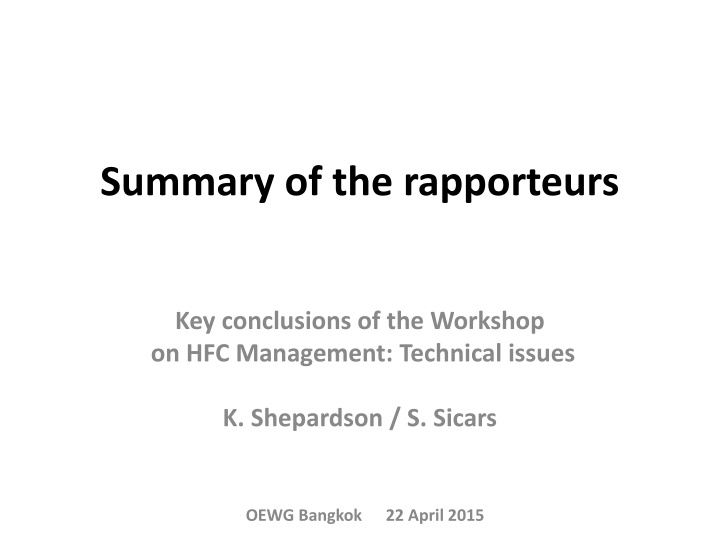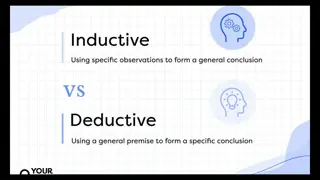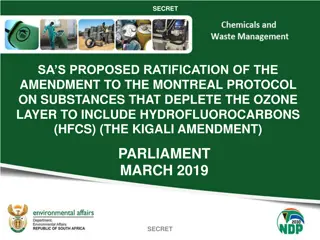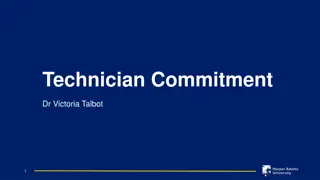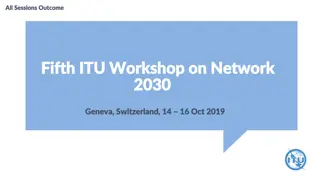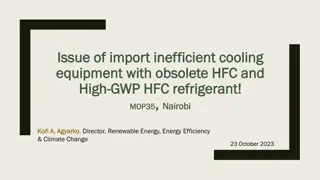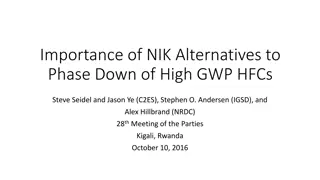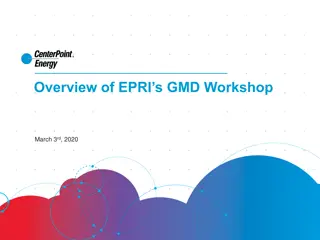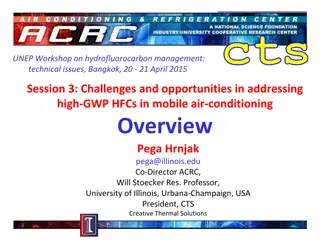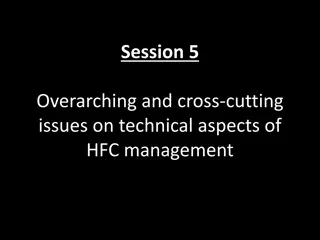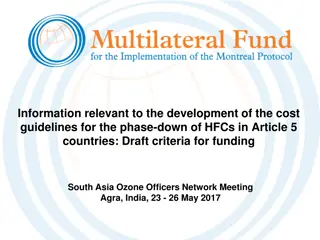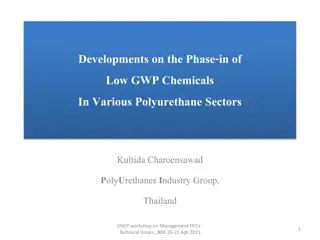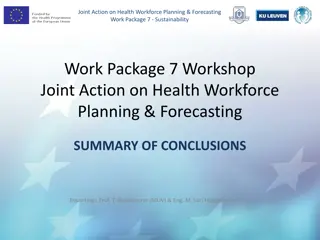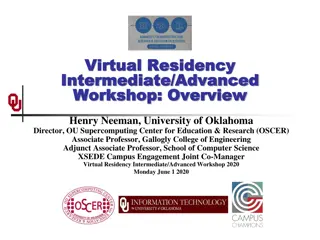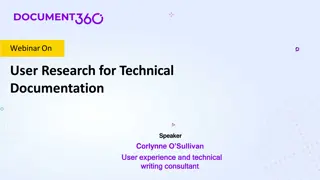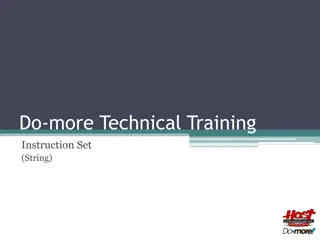Workshop Conclusions on HFC Management: Technical Insights
The Workshop on HFC Management in 2015 delved into technical aspects, highlighting the use of HFCs in various sectors, challenges in adoption of alternatives, energy efficiency considerations, and next steps for transitioning away from HCFCs. Key takeaways emphasized the need for adaptability, innovation, and tailored solutions. The cross-cutting issues of energy efficiency, safety standards, and policy frameworks were underscored, along with the importance of addressing barriers such as investment costs and regulatory gaps.
Download Presentation

Please find below an Image/Link to download the presentation.
The content on the website is provided AS IS for your information and personal use only. It may not be sold, licensed, or shared on other websites without obtaining consent from the author.If you encounter any issues during the download, it is possible that the publisher has removed the file from their server.
You are allowed to download the files provided on this website for personal or commercial use, subject to the condition that they are used lawfully. All files are the property of their respective owners.
The content on the website is provided AS IS for your information and personal use only. It may not be sold, licensed, or shared on other websites without obtaining consent from the author.
E N D
Presentation Transcript
Summary of the rapporteurs Key conclusions of the Workshop on HFC Management: Technical issues K. Shepardson / S. Sicars OEWG Bangkok 22 April 2015
Technology HFCs Used in a number of sectors, sub-sectors Factsheets Alternatives used Different regions, sub-sectors Sometimes not widespread Not commercialized Condensing units/commercial refrigeration Large MAC Medium size air-to-air A/C Economies of scale important April 22, 2015 OEWG Bangkok K. Shepardson / S. Sicars
Technology (cont.) Main barriers: Investment costs Lack of regulations Components Technician training Safety standards Subsectors need to be assessed individually April 22, 2015 OEWG Bangkok K. Shepardson / S. Sicars
Cross-cutting issues Energy efficiency Costs and intellectual property rights Safety and flammability High ambient temperature Policy and regulatory framework Service sector and training needs Special challenges for A5 Countries April 22, 2015 OEWG Bangkok K. Shepardson / S. Sicars
Take-away messages Alternative solutions in almost all sectors Accounting for energy efficiency Need for being adaptive and flexible New technologies to new markets Tailored solutions April 22, 2015 OEWG Bangkok K. Shepardson / S. Sicars
Next steps Ongoing transition from HCFCs in Article 5 countries: Challenges and opportunities for the introduction of lower GWP alternatives in the near term Non-Article 5 countries can accelerate adoption of these technologies even further Immediate and substantial impact: Subsector of commercial refrigeration where R-404A is being used, even with transition to a lower GWP HFC Improve responsible use of refrigerants for the installed base: improvement of manufacturing process and servicing Raising awareness and communication efforts, also outside the Montreal Protocol April 22, 2015 OEWG Bangkok K. Shepardson / S. Sicars
